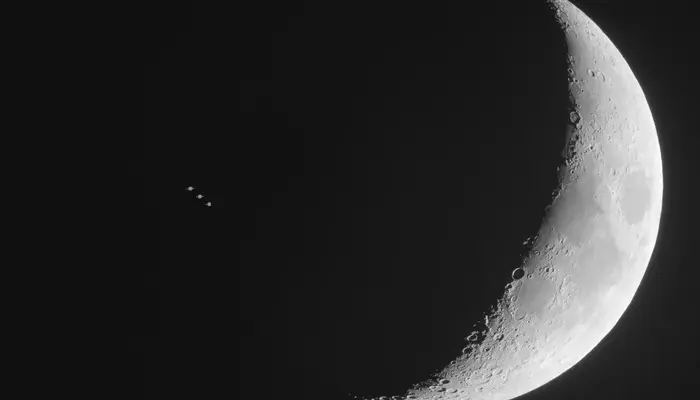Skywatchers were treated to a breathtaking spectacle on January 4, 2025, as Saturn disappeared behind the crescent moon in an event known as a lunar occultation. This celestial alignment offered a rare opportunity to witness the ringed planet vanish from view and then reappear, creating a cosmic display that captivated observers in select regions. The keyword “lunar occultation” highlights the significance of this astronomical phenomenon.
What is a Lunar Occultation?
A lunar occultation occurs when the moon passes in front of another celestial object, such as a planet, asteroid, or star, temporarily concealing it from view. The term “occultation” comes from the Latin word occultare, meaning to conceal or hide. In this instance, Saturn slipped behind the moon, delighting viewers across Europe, Africa, western Russia, and eastern Greenland.
Capturing the Event
Astronomer Gianluca Masi, using the Virtual Telescope Project in Manciano, Italy, captured the lunar occultation in a stunning composite image. The photograph showcases Saturn’s gradual disappearance behind the dark side of the moon and its subsequent re-emergence from the illuminated edge.
The image also highlights the moon’s craters and shadowed areas in intricate detail. Saturn, although appearing small in comparison to the moon’s massive foreground presence, stands out with its iconic rings glimmering in the distance.
Read: Dark Stars: The Invisible Giants Anchoring Our Galaxy
A Cosmic Game of Peek-a-Boo
During the event, the crescent moon was about 30% illuminated, while Saturn shone brightly at a magnitude of +0.9. The celestial pair was visible to the naked eye, but the use of binoculars or telescopes allowed viewers to observe Saturn’s rings and the lunar surface in remarkable detail.
Due to the moon’s proximity to Earth, its position in the sky varied slightly depending on the observer’s location. While only certain regions could witness the full occultation, others saw the moon and Saturn appearing close together throughout the night.
Rare and Upcoming Occultations
Lunar occultations of Saturn are relatively rare and depend on precise alignments. For those who missed this event, the next lunar occultation will occur on February 1, 2025, but will only be visible from extreme northern latitudes, including parts of western Russia. The next globally visible occultation of Saturn won’t occur until 2031, making these occurrences truly special for astronomy enthusiasts.
Observing and Photographing the Night Sky
Events like the lunar occultation provide a perfect opportunity for stargazing and astrophotography. With a basic telescope or camera, amateur astronomers can capture the beauty of celestial alignments. The images captured during this event serve as a reminder of the wonders of our universe and the intricate dance of celestial bodies.
Whether observed through a telescope or admired with the naked eye, the lunar occultation of Saturn offered a mesmerizing glimpse into the vastness and beauty of space. Enthusiasts now look forward to the next opportunity to witness such a celestial marvel.
Follow us on Google News, Instagram, YouTube, Facebook,Whats App, and TikTok for latest updates
